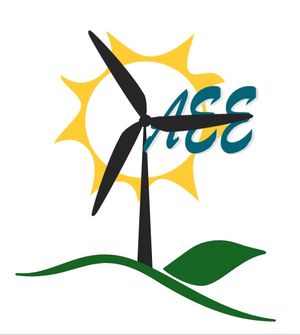
Introduction
Michigan Technological University's Alternative Energy Enterprise is a multidisciplinary, student-run company out of the Chemical Engineering department. The organization's goal is to create or improve technologies to create a sustainable future where our energy needs are met via carbon-neutral sources, lowering our carbon footprint and allowing for energy independence in local communities.
In the 2017-2018 academic year, the EG Solar team was formed. This group was created to focus on all solar energy related projects that were available to the enterprise. Currently, the team is working on two projects. One involves collaboration with a residential window company to analyse the effect of low-e film glass panels placed over solar modules to melt snow cover. The second pertains to consulting for a utility company to run a feasibility analysis of a community solar project within the company's consumer area.
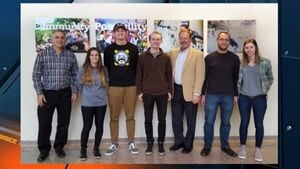
Current Team Members
- Madi Cleary
- Travis Durgan
- Simon Eddy
- Lacey Englebert
- John Frischmon
- Adam Kallionen
- Sean Smith
Heated Glass
In conjunction with a residential window company, six Yingli solar modules were fitted with a pane of low-e film glass. This glass utilizes resistance in a thin film coating to heat the glass surface. The idea is to heat the surface, allowing for the removal of snow cover in the winter months. The project involves various experiments testing the feasibility of this application. If the power used by the heated glass panel overcomes the power produced by the clear panel, it could be a successful future operation.
Power Planning
The goal of this project is to assess the efficiency of using heated glass. To properly quantify power consumption, a schematic had to be made to plan the circuits which can be seen in Figure 1.
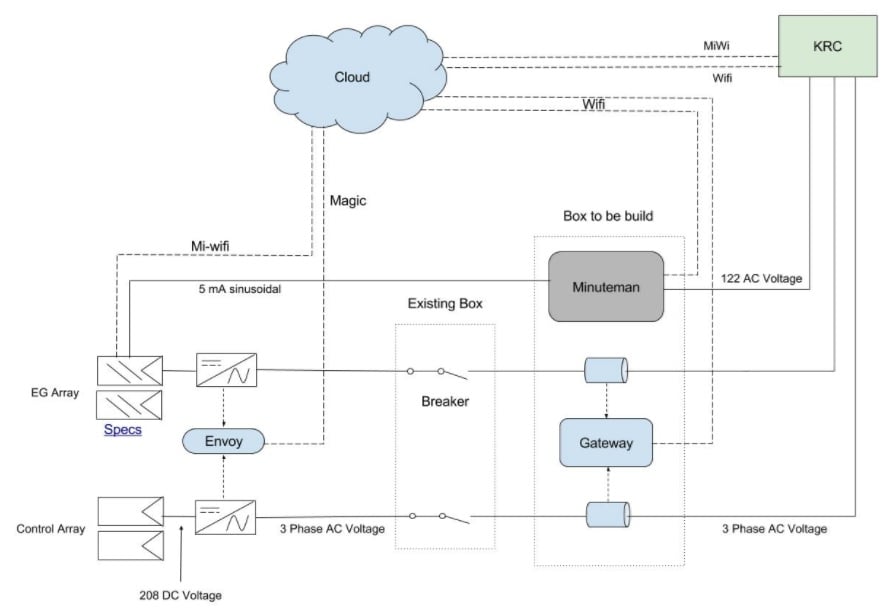
Temperature Uniformity
The glass panels were originally outfitted with one thermocouple to confirm the temperature setting. It was important to confirm that the temperature was uniform throughout the entire panel. Tests were completed comparing temperature readings in relative locations on the panels.
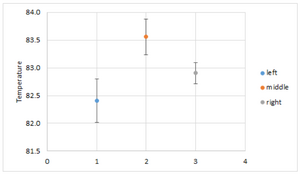
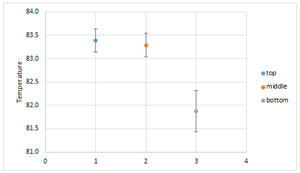
Seen in Figure 3 and Figure 4, it was found that the temperature was sufficiently uniform across the panel.
Glass Layer Energy Losses
The power generated by each panel can be tracked using the online EnPhase software. 12 total modules were installed on location at the Keeweenaw Research Center. 6 were control modules, and the other 6 were outfitted with the heated glass (HG) panel. It is known that glass panes reflect some incoming light. Due to the extra layer on the HG, it was important to compare energy production on a week long basis.
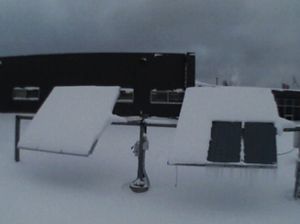
It was found that the extra layer of glass caused an average of 30% energy loss in comparison to the control modules.
Snow Melting Power Consumption
Once snow accumulated on the panels during the winter months, a test was completed to measure the time taken to melt a layer of snow off of the panel. This time reading can be used to calculate the power consumption of the HG, giving an overall efficiency measurement.
Results have not been compiled.
Next Steps
Will be updated at semester completion...
Community Solar
The cost of energy in the Houghton area is quite high with an average of $0.19/kWh. The national average is $0.12/kWh. Link This makes the installation of solar panels quite appealing. The problem is, many rooftops/properties are not suitable for residential solar power. A utility is looking to provide the community with an opportunity to participate in a solar energy installation. This is the utility's first solar project, so they are looking to AEE's expertise. It is EG Solar's project to provide the neccessary details to get the utility started on this project.
Equipment Selection
Utilizing past AEE projects, local professionals, and online resources, optimum equipment will be utilized for the local weather patterns. This includes the following:
- Panels: brand, model, size, color, cost, etc
- Inverters/Optimizers: brand, model, type, size
- Racking
- Location: soil, land type, shading characteristics, weather patterns
Simulation
NREL's SAM will be utilized to estimate the total power production, and payback period for 50kW, 250kW, and 500kW systems.
Results
Will be updated at semester completion
Next Steps
Plans are to complete a financial report for the utility by the end of the spring 2018 semester.